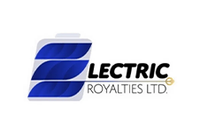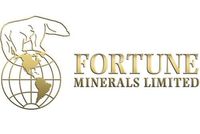New Regulations Unlikely to Rain on EV Parade in China: Experts
Experts told INN that new safety regulations triggered by a rash of EV fires in China are unlikely to have a measurable effect on EV uptake.
In mid-June, the Chinese government implemented a suite of new electric vehicle (EV) safety check ups in response to a number of fires that made the news over the previous months.
The new rules from the industry and technology ministry require electric carmakers to perform safety checks on the critical components of electric vehicles and their charging technology, and they have until the end of October this year to perform the checks, write up reports and submit them to the ministry.
With this EV safety bobbing up in the news, the Investing News Network (INN) reached out to experts in the space to talk about the maturing industry and the regulations in China, as well as the development of battery technology and the future of cobalt.
What triggered the government’s new safety checks appears to have been a series of highly publicized fires involving electric vehicles manufactured by both Tesla (NASDAQ:TSLA) and NIO (NYSE:NIO).
A parked Tesla Model S exploded into flames in a Hong Kong parking lot in May in an incident that sparked Tesla to carry out its own investigation. Nobody was injured in the blaze, which also burned a line of cars in the lot.
NIO has had a rougher time, with a number of fires in its ES8 model triggering a recall of over 5,000 of the SUVs.
EV fires have always garnered media attention everywhere they occur, though experts approached by INN said that, despite the coverage, safety issues around fires haven’t had a historical impact on uptake and sentiment, and are unlikely to have a measurable impact in China.
“Humanity has become accustomed to the dangerous and lethal nature of having an automotive-based society,” said Sam Jaffe, managing director at Cairns ERA.
“I think the average media consumer is intelligent enough to compare coverage of EV fires to the higher risk of having a fire in an ICE (Internal Combustion Engine) vehicle.”
Jaffe also said that there was non-proportional coverage of EV fires. “But it’s understandable: EVs are new and that’s why they call it ‘the news.’”
Basic materials expert at McKinsey Ken Hoffman shared the same sentiment that coverage wouldn’t have any impact on sentiments in China.
“Studies that McKinsey has done show other reasons being much bigger factors in demand, such as range, charging speeds and cost,” he said, adding that “safety is not high on the list.”
Jaffe agreed, saying that there were so few fires that few people were worried.
Government caution part of wider campaign
On the government requirements imposing safety checks on EV manufacturers, Hoffman said that it was part of making the EV story in China successful. “If this helps public perception, it’s the right thing to do.”
Jaffe said the checks must be considered vital to the EV sector’s development as the industry matures.
“Batteries can explode. To make them safe, a lot of safety engineering has to be done around the battery pack design. For the most part, the automotive industry has been successful at doing this. In the few instances where it’s happened, safety checks should be considered absolutely mandatory.”
Senior Research Analyst at Navigant Research Scott Shepard said that, when it came to safety requirements, the imposition of new checks on car makers by the government was a burden, as they were already incentivized to be on the case.
“From a technical and economic perspective, these additional requirements are unlikely to be necessary on the basis that Tesla, NIO and other industry competitors have clear incentives to guarantee product reliability.”
However, he added that, from a policy and marketing perspective, the checks were necessary in order to maintain the public’s faith in the industry.
“It may be limiting and burdensome in the short-term, but it should be ultimately better for long-term market development.”
Shepard said that links between EV fires and sentiment towards the technology in China were difficult to pick out from other factors at play in the space — like the governments sweeteners for buyers.
“EV fires are not new. The recent spate is disappointing, but there are larger forces in the market like government subsidies and emissions efficiency policies. Uptake levels are already predicted to slow because the Chinese government is pulling back on purchase subsidies.”
Aman Verma, senior research analyst at Wood Mackenzie, also talked up the importance of maintaining public faith.
“It’s a question of driver safety and brand identity,” he said, adding that it was the government’s responsibility to restrict and prevent the manufacturing of poor-quality products.
“The government policies have strategically placed China as an EV powerhouse and revolutionized the global auto industry.
“These standards will ensure it doesn’t lose any shine — effective enforcement will be crucial, though.”
Future risks, and the future of cobalt
Speaking of the causes of the fires, fire danger remains a topic associated with electric vehicles as the lithium-ion battery used to power them continues to be developed and refined, with issues surrounding the supply of raw materials in their manufacture a talking point among companies and developers.
A key ingredient in some of the popular types of batteries is cobalt, which is used to make lithium-ion batteries more thermally stable and less likely to overheat.
Car makers want to remove it from their batteries, for two key reasons. First, less cobalt means a more energy-dense battery with longer range. Secondly, the majority of the cobalt is mined in the Democratic Republic of the Congo (DRC). The DRC is a problematic jurisdiction that exposes the supply chain to reputational risk, but it also happens to be where most of the easy cobalt is.
Even so, engineering it out is a move into not quite uncharted but less explored waters as the technology is being developed and understood.
Hoffman said that, even in a developing industry, safety wasn’t something to be majorly concerned about as long as things are done right.
“Range is crucial for EV development, not only from the consumer standpoint, but also for city infrastructure. There is a massive push globally for range and the best range cars are the most popular. If not made properly, any EV battery could see a risk, but if made properly and with proper control systems, even the highest density EV batteries are safe.”
To Jaffe, more EVs sold meant continued safe development of the industry.
“Overall, (safety) has increased. The more miles driven and data collected on actual usage, the more the industry learns on how to make their cars safer.”
Developing batteries with a higher energy density meant that there was more risk, said Shepard, though he said that the industry was very aware of those risks.
“The automotive sector has been moving cautiously here and adapting to this threat with greater sophistication of battery protection systems. Given that, as industry implements new management protocols (like Tesla) or deploys new product (like NIO) to the market, the probability of uncovering an untested scenario with an unfortunate result is increased.”
Jaffe also spoke about the risks of developing new technology, noting that there are safety risks in using batteries with less cobalt that still need to be worked on, and the fires in China are likely to be a setback.
Going deeper into the chemistry, Jaffe said that it is important to remember that the cathode materials in batteries are not flammable.
“It’s the hydrocarbon-based solvents in the electrolyte that is what catches fire. A poorly functioning electrode can heat up the battery, leading to thermal runaway. But the real problem is the hydrocarbons inside the battery.”
When asked if continued EV fires are an indicator that the industry could be stuck with cobalt and its value as a safety feature, Hoffman said that, for now, the story could go either way for the mineral.
“Some recent university studies show that cobalt could be greatly reduced, but have no conclusions with regards to cycle life. It’s obvious the auto industry would love a cobalt-less long range, high density battery. To date, the best in class in the Tesla/Panasonic (OTC Pink:PCRFF,TSE:6752) battery with less than 5 percent cobalt. It will be interesting to see these developments in the future.”
Don’t forget to follow us @INN_Resource for real-time news updates!
Securities Disclosure: I, Scott Tibballs, hold no direct investment interest in any company mentioned in this article.
Editorial Disclosure: The Investing News Network does not guarantee the accuracy or thoroughness of the information reported in the interviews it conducts. The opinions expressed in these interviews do not reflect the opinions of the Investing News Network and do not constitute investment advice. All readers are encouraged to perform their own due diligence.


